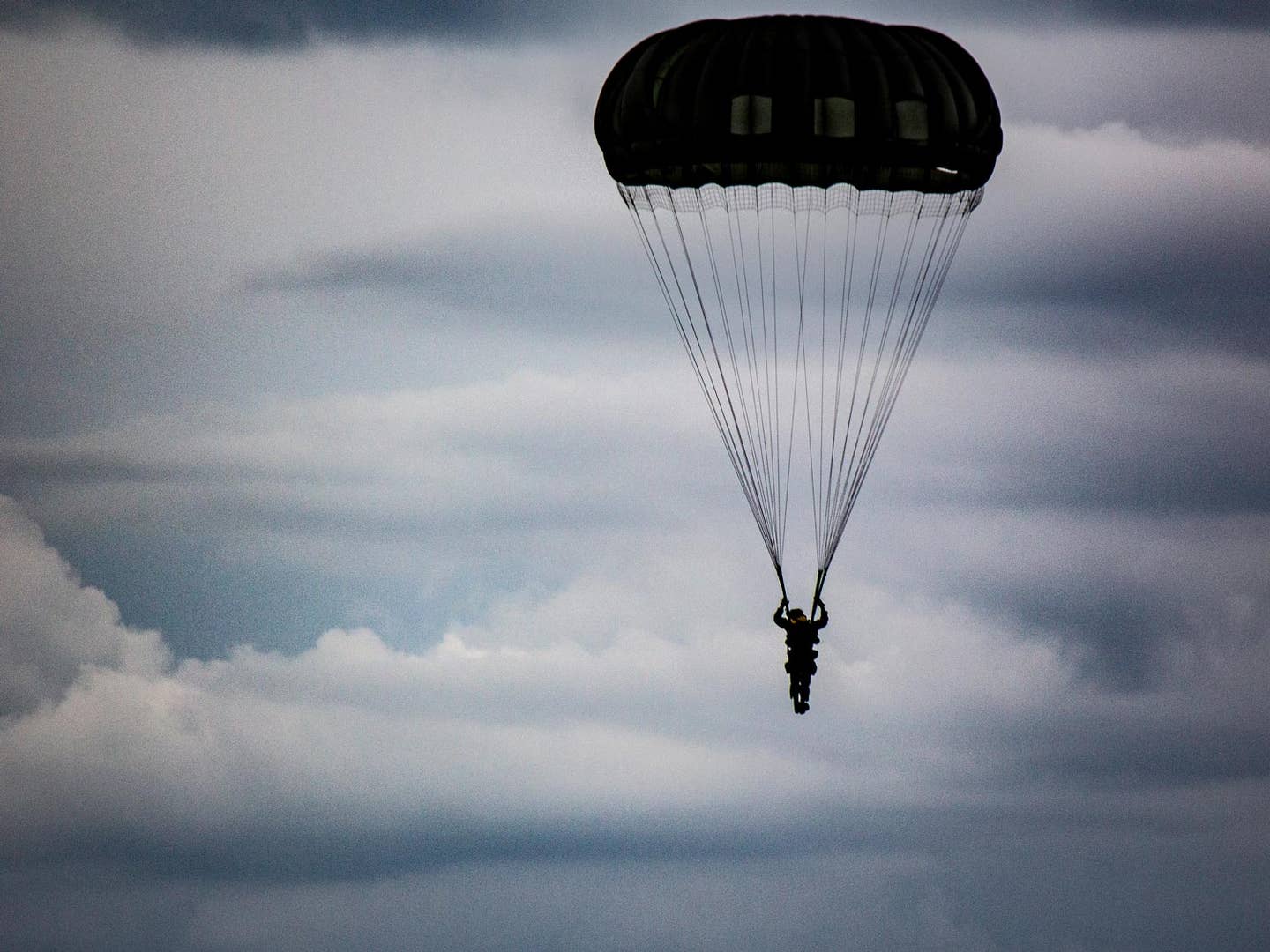
Jumpers from several nations came together to re-create the airborne mission. Courtesy Stephen Yeates
The event took years to plan, months to prepare, weeks to position and practice—and one day to execute. On the early evening of June 5, 2019, as clouds brooded over the Normandy countryside, a formation of Douglas C-47s and other DC-3 variants delivered on the mission to re-create a critical paratrooper drop commemorating the 75th anniversary of Operation Overlord, known to most as D-Day.
Under the oversight of Daks Over Normandy, and including the significant efforts of the D-Day Squadron (which brought 15 of the aircraft over from the United States), the drop capped a stunning week in which up to 30 of the classic aircraft gathered at Duxford Airfield, in England, and Caen Airport, in France. The airborne jumps required an additional set of formation and drop practice flights in Duxford during the days leading up to June 5, the date of the planned mission.
Weather loomed large as a factor—just as it did 75 years ago when Group Captain James Martin Stagg of the Royal Air Force predicted a storm that might stymie the mission. But as the hour approached, the low ceilings and rain held off just long enough to give a good window for the most complex of the operations—a combined drop that featured 10 Dakotas dropping roughly two sticks of up to 12 jumpers apiece led by a special drop by the British Army's Red Devils Parachute Display Team. The elite corps hosted two honorary members—D-Day veterans Harry Read, 95, and John "Jock" Hutton, 94—who jumped with the team for the demonstration.
A crowd of observers gathered to watch the event in an expansive wheat field known during the war as Sannerville DZ K. While the first series of drops on the actual D-Day in 1944 happened before dawn’s light, conditions dictated that this event take place during the day—but evening began to fall before the Daks came into sight on radar over France.
As the Red Devils completed their jump, and the first of the Dakotas turned in from the coast, a silence fell upon everyone. Only the sound of the radial engines throttled back overhead beat through the air. Jumpers came out on static lines under traditional round-canopy chutes, and in rows filling the skies. For an incredible twenty minutes, those in the field understood what it must have been like to witness this part of D-Day. Be there too—see the video.

Subscribe to Our Newsletter
Get the latest FLYING stories delivered directly to your inbox






